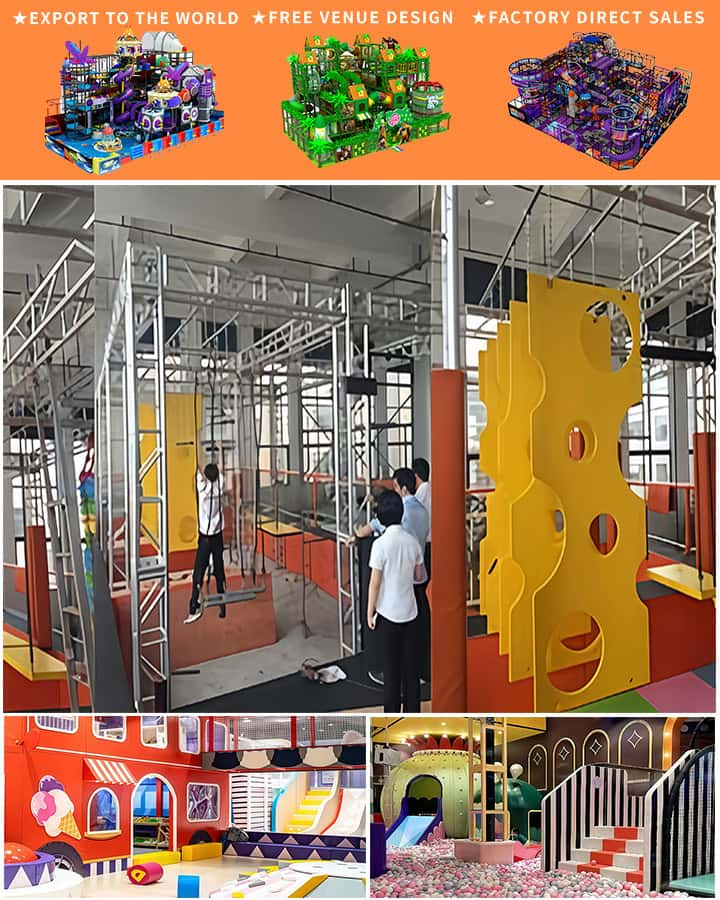In today’s fast-paced world, indoor playgrounds have emerged as a dynamic solution for parents looking to provide their children with safe, enjoyable environments regardless of the weather. The commercial aspect of these indoor playgrounds, bolstered by high-quality equipment, is rapidly growing into a lucrative business venture. This article delves into the key benefits and considerations for investing in indoor playground equipment, focusing on its commercial potential and the factors that contribute to a successful operation.
The Rising Popularity of Indoor Playgrounds
With increasingly busy lifestyles and unpredictable weather patterns, the demand for indoor recreational spaces has surged. Indoor playgrounds offer a controlled environment where kids can play safely while engaging in physical activities essential for their growth and development. These facilities have become go-to destinations for birthday parties, family outings, and even school events, providing a steady stream of visitors throughout the year.
Types of Indoor Playground Equipment
Investing in a variety of indoor playground equipment is crucial for attracting a diverse group of patrons. Popular options include:
- Trampolines: Offering a fun way to expend energy, trampolines are a hit among all age groups.
- Slides: From gentle slopes for toddlers to adrenaline-pumping steep slides for older kids, slides cater to various thrill levels.

- Climbing Structures: These promote motor skills and coordination, challenging children to reach new heights.
- Interactive Games: Modern technology integration, such as video walls or interactive floors, adds an innovative twist to traditional play.
Safety First: A Top Priority
Safety is paramount when it comes to indoor playground equipment. Regulatory standards must be met or exceeded to ensure the well-being of young visitors. High-quality materials, regular maintenance, and proper installation procedures are essential to minimize risks and build customer trust.
Commercial Benefits
The commercial potential of indoor playgrounds cannot be overstated. Here are some key benefits:
- Recurring Revenue Streams: Membership programs, season passes, and daily admissions create consistent income sources.
- Diverse Offerings: By incorporating different types of equipment and hosting various events, indoor playgrounds can appeal to a wide demographic, from toddlers to tweens.
- Market Resilience: Unlike outdoor venues, indoor playgrounds are less affected by seasonal changes and can operate year-round.
- Brand Loyalty: Providing a memorable and enjoyable experience fosters repeat visits and word-of-mouth referrals, strengthening the brand’s presence in the community.
Strategic Considerations for Investors
When venturing into the commercial side of indoor playgrounds, several strategic considerations come into play:
- Location: Proximity to residential areas, schools, and shopping centers enhances accessibility and foot traffic.
- Target Audience: Understanding the local demographic helps in tailoring the playground’s theme and offerings to meet community needs.
- Marketing Strategies: Effective marketing, including social media campaigns, partnerships with local schools, and community events, can drive initial interest and ongoing engagement.
- Operational Efficiency: Streamlining operations, managing staff effectively, and leveraging technology for booking and payments can optimize performance and profitability.
Conclusion
Investing in indoor playground equipment opens up a world of opportunities for entrepreneurs looking to tap into the thriving market of indoor recreation. By prioritizing safety, offering a variety of engaging activities, and implementing sound business strategies, operators can create successful ventures that bring joy to children and financial returns to investors. As the demand for family-friendly indoor activities continues to grow, the commercial landscape for indoor playgrounds is poised for significant expansion and profitability.




